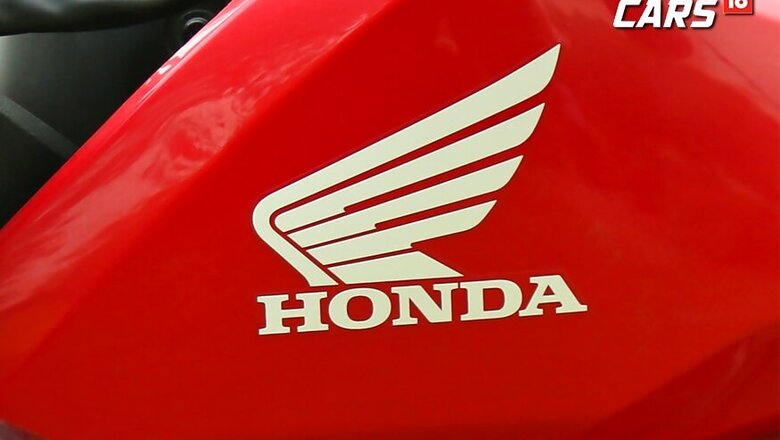
views
Japanese auto major Honda Motor Co said it is aiming to be the top two-wheeler manufacturer in India by 2020, overtaking erstwhile partner Hero MotoCorp. According to Honda Motor Co Chief Officer Regional Operations (Asia and Oceania) Shinji Aoyama, the company will have a competitive advantage over rivals when India adopts the stringent BS-VI emission norms. "The year 2020 can be a possible year to become number one," Aoyama told PTI when asked by when Honda was aiming to take the top slot in Indian two-wheeler market.
Currently, Hero MotoCorp is the top player in the Indian two-wheeler segment. The two partners had parted ways in 2010 after 26 years of successfully running a joint venture -- Hero Honda. At present, the company's arm Honda Motorcycle & Scooter India (HMSI) has 59 percent market share in scooters, while occupying number two position in motorcycles in India. HMSI is targeting to sell 60 lakh units in the country in the current fiscal.
In 2016-17, Hero MotoCorp sold 64,83,655 units in the Indian market, whereas HMSI sold 47,25,067 units. Elaborating reasons behind Honda's confidence to claim top slot in India, Aoyama said the most important factor for 2020 is how manufacturers meet BS-VI norms. "As far as Honda is concerned we are pretty confident with what we are going to do with BS-VI... I believe we can be more competitive than other brands. That is why we may have the potential to be number one," he said.
When asked if the company has set a sales target in India by 2020, Aoyama said it was difficult to say as the industry may witness a dip in sales after 2020 as BS VI norms may lead to a rise in product prices. "The market may decline. We are not sure," he added. Aoyama said that it is going to be very difficult in the next 3-4 years to ascertain if the company would have to go for a further hike in production capacity in India. HMSI is running at full capacity at present.
The company has commissioned a fourth assembly line at Narsapura plant, adding 6 lakh units per annum. "Due to the introduction of BS-VI norms in 2020, it is a bit difficult to decide right now on future production capacity. After 2020, we may witness some decline. May be after that due to strong demand in the market we may recover once again. It is unpredictable right now, Aayoma said.
On company's product strategy in India going ahead, he said the focus would be on the commuter segment. "Yes, in the premium segment we know there is a lot of demand, however, we will do something but it cannot be the major or main stream of Indian operations," Aoyama said. On plans to make India an export hub, he said that the company's basic business principle remains to manufacture products where there is demand.
"At this moment China and India are major two countries from where Honda eyes exports to relatively smaller markets like Latin American companies, some of the Asian countries like Sri Lanka or Nepal. According to regulatory norms in the countries, this situation may change," Aoyama said.
Currently, regulations in China are more widely accepted in various countries for being stricter than one in India, he said. "But after the introduction of BS VI norms, the situation may reverse. So, that means India can have potential to export more to various countries," he added.
HMSI President and CEO Minoru Kato said that with the ramping of the production capacity, the company is now ready for undertaking "aggressive ambitious" strategy in India. "Honda has set the most challenging target in 2017-18 of adding one million additional customers over last year," Kato said. He said HMSI plans to sell 6 million units with 20 per cent growth this fiscal. "In the next 3-4 years we will bring many products in the Indian market," Kato said, adding future is challenging yet exciting in India and Honda is completely ready. "Our aim is not only to cater to Indian domestic demand but also to global demand by making India a global export hub in near future," Kato said.
During the first quarter of the current fiscal, HMSI's sales grew by 19 percent as compared to industry's growth rate of 9 percent, he said.
Also Watch: Honda Africa Twin Review




















Comments
0 comment